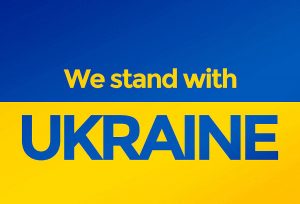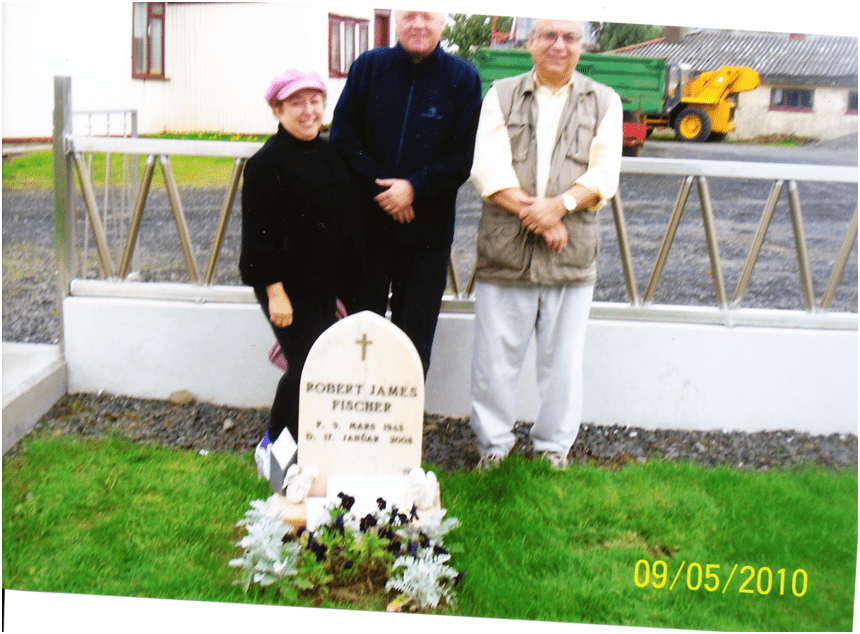NCCA officers
Charles Roberson - President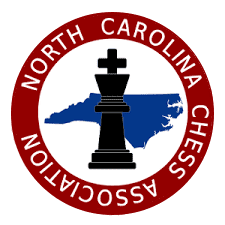 John Timmel - First Vice President
Grant Oen - Scholastic Vice President
Wayne H. Spon - Secretary/Treasurer
Contributors
Roz Katz
Dr. Walter High
Conrad Conero
Charles Roberson - Editor
John Timmel
Web support, edit, and distribution
John Timmel
John Timmel - First Vice President
Grant Oen - Scholastic Vice President
Wayne H. Spon - Secretary/Treasurer
Contributors
Roz Katz
Dr. Walter High
Conrad Conero
Charles Roberson - Editor
John Timmel
Web support, edit, and distribution
John Timmel
Notes: Please remember to check the latest Directory of Clubs and report any issues.
Also, feel free to submit notices and/or contribute articles to the Gambit.
NC Gambit March 2022

The above Zaria© “58th,” was originally printed in June, 2003 in Chess for Kids.
In this issue, you will find:
Roz - Land of the Sky, Alan Chen feature, and March birthdays Walter - the genesis of ALTO+ John Timmel – “…To Move and Win!” Charles Roberson – Second article of his series on Computer Chess
Roz – Land of the Sky
33 consecutive years, except for 2021 [no thanks to Covid], Bruce Goodwin attended the “Land of the Sky” Tournament in Asheville, NC. In the beginning Wilder Wadford, Jr. met with the five players who were members of the Asheville Chess Club proposing the idea of a National Tournament. They all agreed to invest in the promised $10,000 prize fund – until they found investment would disqualify them from competing in the tournament. They promptly withdrew from the investment, they all wanted to play!!!! Only one year showed a loss, the year of the snowstorm.
Kevin J. Hyde is the chief Tournament Director of this annual event. 2022 was considered a success, with a turnout of 190 players. There was an immediate sense of family. Everyone seemed to know one another and their love for chess was palpable. There were roughly five groups of local players, who were all in attendance. Surprising were the players from: CA, CT, FL, GA, PA, KY, LA, NM, SC, TN, TX, and VA; all made to feel welcome. One year there was even a player from Brazil. The Crowne Plaza Hotel, provided an excellent venue for the tournament. Spotlessly clean with a terrific and cooperative staff, this was truly impressive.
Our GPS says the trip from Durham to Asheville is four hours. Going took us 5.5 hours, the return was 6.5 hours. My advice about planning for the trip: take the weather report and subtract 20 degrees. It is cold, cold, cold in those mountains. Gorgeous, but cold. Make sure to schedule extra days to enjoy the spectacular mountains. We visited Biltmore and the Grove Park Inn. Our only regret was NOT playing.
One of the participants in the Land of the Sky Tournament was eight-year-old Alan Chen. Alan attends the prestigious Durham Academy, and was taught by a friend to play. Although loving, charming, brilliant and supportive, the Chen parents do not play chess. Alan’s coach is GM Magesh Panchanathan. Alan has been learning from GM Magesh since last August. GM Magesh and M Arun run a chess club named KING&QUEEN Club, which bases at NC and NJ. Alan really learns a lot from the coaches.
Alan began to learn chess 2.5 years ago. There is a chess class in the Chapel Hill Chinese School. The coach was Mr. Daniels. In looking at his face in the picture below, you can see the absolute joy he experiences when playing. Alan, we will be watching as you grow and progress.
Alan Chen and Charles Pole
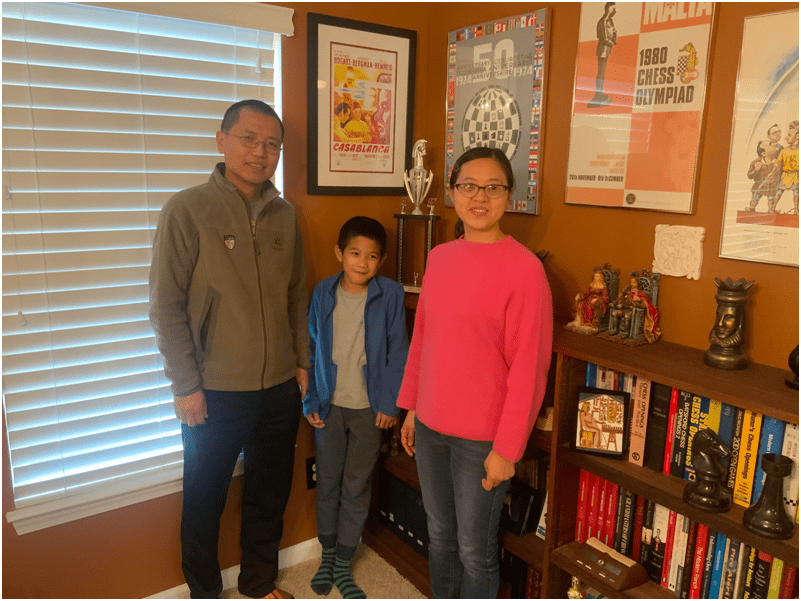
Alan Chen and his parents, Hongyun Zhou & Wenfeng Chen.
Land of the Sky Tournament:
USCF event summary – https://www.uschess.org/msa/XtblMain.php?202202066802.0
Land of the Sky web page – https://landofthesky.us/
Congratulations to all the prize winners!
|
|
MARCH BIRTHDAY
This was written upon the death of Bobby Fischer in January of 2008. My father and many friends were extremely critical of the piece. All my friends in Iceland loved it, and I was asked to speak at the Marshall Chess Club in NYC about Fischer and antisemitism.
The full presentation is ten to fifteen minutes, and I will happily deliver it to your chess club in person upon request. Should you be more than two hours from Durham, I may need to Zoom.
Remembering Robert J. Fischer
To every US Chess Player, “Bobby”
My father’s name, a common name – for a unique person
Imagine immortalizing “Bobby.”
He was born when I was three days old, March 9, 1943.
Others would conjecture, “How old is he now?” Not me, I always knew.
Bobby mania hit me in 1972: birthing babies and following Shelby; screaming at the little black and white screen with all the lines across.
We had a hundred friends in common and ran in concentric circles.
My friends in Iceland cherished and protected him.
Coping with his madness, even when it became impossible, and made him secure.
A job we couldn’t do. Many tried, but only the special Icelandics succeeded.
Bravo for them. I love them.
Even though I’m a Jew
Even though I’m American
I’m still a chess nut
And I know what he did for us, how proud we were, how joyful we were, how the glow spilled onto us all.
Crying for Bobby,
Chessically yours,
Rosalyn B. Katz
CHESS NUGGETS
A Monthly Blog for North Carolina Chess Players
ALTO is back! (What’s an ALTO?) – by Walter High (wmhigh@nc.rr.com)
If you recently looked at the Upcoming Tournaments section of either the NCCA or Charlotte Chess
Center webpages, you might have noticed that there is an ALTO tournament coming up (April 29-May 1,
2022). What is ALTO and how is it different from other chess tournaments?
ALTO stands for At Least Twenty-One (years old). It is a tournament for adults only. The first two ALTO
tournaments (2018 and 2019) were held in Burlington under the auspices of the Carolinas Chess
Initiative (CCI). The opportunity to hold an ALTO in 2020 and 2021 was denied by the unrelenting COVID
virus. When I merged my CCI organization into the Charlotte Chess Center & Scholastic Academy, I
brought along my own tournaments which will now be organized by the CCCSA.
Why did we begin holding ALTO tournaments? A little history may help. When I arrived on the North
Carolina chess scene in 2006, most tournaments were scholastic in nature. There were a few multi-day
weekend tournaments for adults (Land of the Sky, North Carolina Open, LPO, Blackbeard) and also some
one-day Saturday tournaments (Asheboro Open, TACO, etc.). These events had prize funds and were
“money” events. They were mostly populated by adult participants, but some kids always played, mainly
the stronger ones who were really working on their game. The chess calendar was mainly composed of
scholastic events during the school year. Within a decade much had changed. School chess programs
blossomed and kids quickly became strong players needing adult competition to advance their skills (my
two boys included!). The attendance at the “money” events grew as kids went from 20% of participants
to 50% or more. This change has been great for chess in general and most of today’s strong players in
their 20’s benefitted from this growth and opportunity.
Chess tournaments underwent a fundamental change with the influx of children. They had to leave the
small venues with low rental fees and move to large hotels with adequate space, but high fees. Prize
funds and entry fees increased accordingly. The children also brought an energy level that often seemed
at odds with the staid nature of chess. It used to be unusual to see your opponent dance and bounce
behind his chair while you considered your next move. Also, older players were not used to facing an
opponent whose playing skill exceed his rating by well over 100 points! The kids improved rapidly and
sometimes feasted upon older players who were dismayed to be thrashed by someone who had to
stand to reach pieces across the board.
Because there are many scholastic tournaments on the calendar, some adults asked if we could host an
“adults only” event. They wanted the chance to play all their rounds against opponents who performed
at their posted rating level. Another benefit of an adults only tournament is that the players are not
accompanied by non-playing parents and siblings who sit/stand outside the playing hall conversing
loudly while waiting for their player to emerge. The tournament is extremely quiet! I decided to meet
this request by creating ALTO four years ago. I have tried to hold it in spring at the height of the
scholastic season when kids might be otherwise occupied.
The CCCSA will continue ALTO with a 2022 event. If you will be over 21 years old by April 29, 2022, this
may be the event for you! It will be held in Charlotte at a smaller venue with a maximum capacity of 125
players. This is an absolute limit, so sign up in advance to guarantee your participation. Full tournament
information and registration links are available at: charlottechesscenter.org/alto
“…to Move and Win!”
NC Gambit Monthly Chess problem – by John Timmel
This month’s problem was composed by Dan Meinking. Dan was taken from us at a much too young age in 2012. He was both a stong OTB Master (2300+ USCF), and a FIDE Master of Chess Composition. I recommend setting this one up on physical board.
Post your answer on the NC Chess Forum.
Dan Meinking / Chess Life 1982
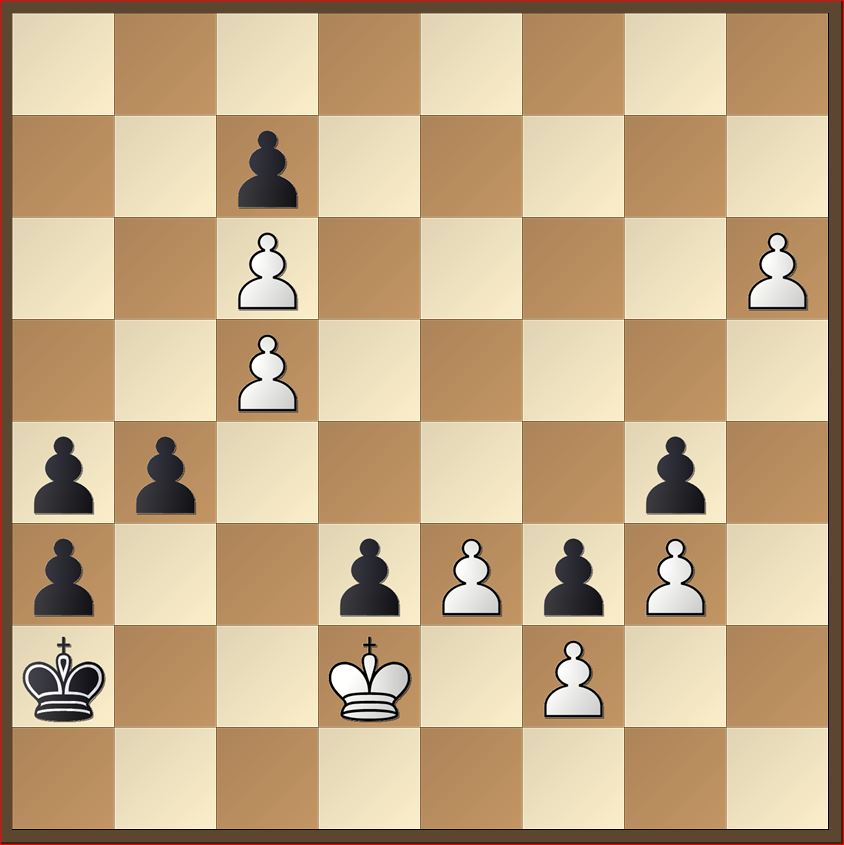
White to Move and Win
Solution to last month’s problem
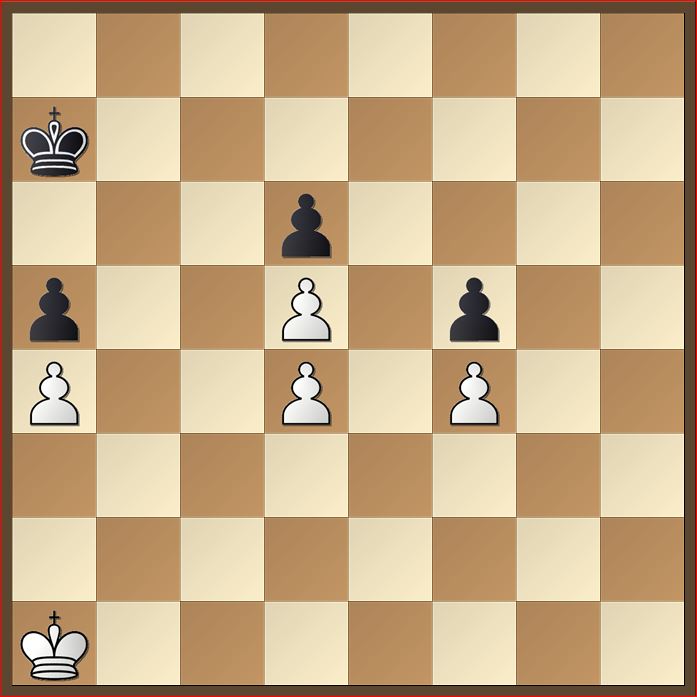
1.Kb1!
Congratulations to Patrick McCartney for solving February’s problem!
from Patrick: It all has to do with the corresponding squares and
1.Kb1! Is the only way to do it!
1.Ka2? Kb7 (or Kb8) draws
1.Kb2? Ka8 draws
See the “…to move and win” forum topic for a complete explanation from Patrick
https://ncchess.org/forums/topic/to-move-and-win/
COMPUTER CHESS
Training with and Using Chess Computers
The Importance on Quiescent Search for Humans and Computers– by Charles Roberson
“If you think something like “… human’s don’t and can’t think like computers… so there isn’t any reason to consider this”, you couldn’t be more wrong.”
Hint: To read this article quickly. read the intro and the conclusion then come back to the proof.
Introduction
In last month’s article (click here), I discussed using computers for chess training and adjusting their strength by limiting their search depth to a fixed ply. From that discussion came the playing strength of the chess AI Ares at fixed plies 1-11 and that a one ply search is estimated at 1101 FIDE which is in part due to the use of a Quiescent search (Q-search: captures only search) at the end of the normal search. This month’s article investigates the value of performing a Q-search for computers and discusses the value of it in human searches. Also, this research produces new computer training opponents that give more granularity to the playing strength producing a range of training opponents for people in the U1100 rating range.
Before we get into the computer discussion, lets consider the use of a “computer algorithm” in human search processes. You might think something like “… human’s don’t and can’t think like computers… so there isn’t any reason to consider this”. Well, you couldn’t be more wrong. We are talking about a simple capture only search at the end of your normal search to make sure the resulting position is quiet. A quiet position is one that doesn’t have any captures. Assessing the value of a quiet position is doable. Assessing the value of nonquiescent position without a search is error prone. Consider that a 1-ply search of Ares scored an 1100 FIDE Elo estimate. One ply is really simple: just look at your options and make a move. But, there was more to it than that: Ares always extends the search one ply for checks at the end of the search and then performs a Q-search (captures only search). This is practically the standard blunder test advocated by most chess coaches: imagine making your move then look at all your opponent’s checks, captures and one move threats. Except, Ares leaves out the one move threats. So, we are talking about something humans can do, many do and chess coaches advocate.
NM Dan Heisman, in his YouTube channel ( https://www.YouTube.com/c/danheismanchess), often professes the need to perform a Q-search at the end of your normal search and the need for a blunder test. In correspondence, I mentioned to Dan that some of my student’s parents thought that teaching them to perform a blunder test is teaching them to be a defensive player and thus wrong. Dan responded that “It’s never “defensive” to see if your moves are safe. It’s just good basic chess. I am a very aggressive player but I always check to see if my moves are safe.” Published chess player, teacher and author Eugene Znosko-Borovsky stated “Avoid Mistakes: To avoid mistakes is the beginning, as it is the end, of mastery in chess.” in his book How Not To Play Chess. If you don’t perform a Q-search you are unlikely to evaluate the position at the end of your search accurately. This is true for humans and computers. This begs the question of what is the Elo rating value of performing a Q-search.
Proof
It is well understood in the field of computer chess research that a Q-search strengthens a program’s play. However, I’ve never seen published research on the exact gain. This is possibly due to multiple ways of implementing it and some will have varied values. From here forward, I present my original research on answering the question in detail.
In last months article, I produced the following table on the approximate Elo rating of my chess program Ares at fixed depth searches of 1 ply to 11 ply. We see the rating runs an approximate range from 1101 to 2268.
| Search Depth | Rating | Error +/- |
|---|---|---|
| Ares ply= 1 | 1101 | 74 |
| Ares ply= 2 | 1257 | 73 |
| Ares ply= 3 | 1343 | 70 |
| Ares ply= 4 | 1528 | 68 |
| Ares ply= 5 | 1647 | 67 |
| Ares ply= 6 | 1820 | 66 |
| Ares ply= 7 | 1918 | 69 |
| Ares ply= 8 | 2017 | 72 |
| Ares ply= 9 | 2070 | 73 |
| Ares ply= 10 | 2176 | 82 |
| Ares ply= 11 | 2268 | 92 |
The information in the table begs the thought of creating another 11 versions of Ares using the same fixed depths with the Q-search turned off. This is an interesting idea because the value of the Q-search may be different at differing fixed depths of the main search. It is easy to imagine that it might be more valuable at shallow searches and less valuable where the main search runs deeper. To that end, I included those versions of Ares in the blitz chess tests of 2000+ games between them, the 11 Ares with a Q-search and some other programs with known FIDE Elo estimates from the Computer Chess Rating Lists (CCRL). The combined results are in the table below.
| Search Depth | Rating | Error +/- |
|---|---|---|
| Ares NoQ ply= 1 | 415 | 186 |
| Ares NoQ ply= 2 | 893 | 93 |
| Ares NoQ ply= 3 | 1009 | 84 |
| Ares ply= 1 | 1101 | 74 |
| Ares NoQ ply= 4 | 1182 | 74 |
| Ares ply= 2 | 1257 | 73 |
| Ares NoQ ply= 5 | 1266 | 73 |
| Ares ply= 3 | 1343 | 70 |
| Ares NoQ ply= 6 | 1423 | 68 |
| Ares NoQ ply= 7 | 1515 | 69 |
| Ares ply= 4 | 1528 | 68 |
| Ares ply= 5 | 1647 | 67 |
| Ares NoQ ply= 8 | 1659 | 66 |
| Ares NoQ ply= 9 | 1787 | 68 |
| Ares ply= 6 | 1820 | 66 |
| Ares ply= 7 | 1918 | 69 |
| Ares NoQ ply= 11 | 1921 | 69 |
| Ares NoQ ply= 10 | 1925 | 68 |
| Ares ply= 8 | 2017 | 72 |
| Ares ply= 9 | 2070 | 73 |
| Ares ply= 10 | 2176 | 82 |
| Ares ply= 11 | 2268 | 92 |
In the above table, you’ll notice that removing the Q-search from Ares weakens it significantly. Also, it implies that adding such a search to the end of a human’s search may improve their accuracy. We see that the 1 ply search with Q-search is stronger than the 3 ply search without a Q-search and so on. There is a data anomaly that needs explanation: the 11-ply search without Q-search is weaker than the 10-ply search without the Q-search. This is due to some loses on time by the 11-ply version. The addition of a Q-search, despite increasing complexity of the algorithm, speeds up the search due to increased accuracy. Therefore, simpler is sometimes worse than more complex. The same can be said for humans: the more accurate your position assessment the faster you will search.
| Search Depth | Rating | Error +/- | Search Depth | Rating | Error +/- | Rating Difference |
|---|---|---|---|---|---|---|
| Ares ply= 1 | 1101 | 74 | Ares NoQ ply= 1 | 415 | 186 | 686 |
| Ares ply= 2 | 1257 | 73 | Ares NoQ ply= 2 | 893 | 93 | 364 |
| Ares ply= 3 | 1343 | 70 | Ares NoQ ply= 3 | 1009 | 84 | 334 |
| Ares ply= 4 | 1528 | 68 | Ares NoQ ply= 4 | 1182 | 74 | 346 |
| Ares ply= 5 | 1647 | 67 | Ares NoQ ply= 5 | 1266 | 73 | 381 |
| Ares ply= 6 | 1820 | 66 | Ares NoQ ply= 6 | 1423 | 68 | 397 |
| Ares ply= 7 | 1918 | 69 | Ares NoQ ply= 7 | 1515 | 69 | 403 |
| Ares ply= 8 | 2017 | 72 | Ares NoQ ply= 8 | 1659 | 66 | 358 |
| Ares ply= 9 | 2070 | 73 | Ares NoQ ply= 9 | 1787 | 68 | 283 |
| Ares ply= 10 | 2176 | 82 | Ares NoQ ply= 10 | 1925 | 68 | 251 |
| Ares ply= 11 | 2268 | 92 | Ares NoQ ply= 11 | 1921 | 69 | 347 |
The above table looks at a side by side comparison of equal search depths with and without Q-search. We see that Ares at fixed depth ply=1 without the Q-search is 686 Elo weaker than it’s counterpart with the Q-search. In fact, we see a considerable drop in strength for all fixed depths when the Q-search is removed. Reviewing the rating differences, we see the benefit of the Q-search is greater at the lower levels (350-400 Elo) than at the top levels (251 Elo). Also, notice that performance is more stable at the lower plies with the Q-search enabled: the error margin is larger for the versions without the Q-search. There exist multiple benefits to humans from these results.
- The Q-search is indeed more valuable to computers and humans performing shallow searches.
- U1100 players can up their ratings to nearly 1100 by performing a Q-search or a simple blunder test on each candidate move.
- You can add an average of 327 Elo to your playing strength by using a Q-search.
- Performing a blunder test and Q-search on your moves will increase performance stability.
- The effectiveness of the Q-Search throughout the range of fixed depth searches is 251 to 686 Elo.
- I’ve increased the number of potential chess training partners and there are 3 new training partners rated below 1100 Elo.
Of course, the implications of this research requires you to perform the Q-search at the end of your normal search on every move. To get the full effect, you can not perform it on just some of your moves.
All versions of Ares did have one search extension turned on and that was check extensions at the end of the normal search. Even at a 1-ply search, if the next move puts Ares in check, it continues 1 more ply of search with or without the Q-search enabled. This means that with the Q-search enabled Ares at a fixed depth of 1-ply would do the same thing as a human that looks only at his candidate moves and then performs a blunder test on each of them. A simple blunder test is defined as imagining making your move then consider all your opponent’s checks and captures. This doesn’t include the traditional addition of one move threats to the blunder test which improves effectiveness!
I’ve informed beginner students that performing a blunder test on their candidate moves and their opponent’s moves will raise them to a USCF skill level of 1000 almost instantly. Remember Eugene Znosko-Borovsky stated “Avoid Mistakes: To avoid mistakes is the beginning, as it is the end, of mastery in chess”. Also, all the programs in this study used the same opening book. Thus, even a good opening book doesn’t bring you above 1000 Elo by itself.
Conclusion
The Ares NoQ (no quiescent search) chess AI is available with an approximate range 415 Elo to 1925 Elo downloadable at http://aigames.net/AresChess.html. Together with the normal version of Ares, you have training partners ranging from 415 to 2400+ Elo (FIDE approximation). The addition of a Q-search at the end of a normal search is measurably effective (251-686 Elo) for computers and simple enough for humans to perform. It is shown that U1100 players can improve their playing strength to nearly 1100 by just performing a simple 1-ply search and a check/capture search at the end or a 1-ply search and a simple blunder test which is similar to a check/capture search. Regardless of how deep you search, a Q-search and blunder test will improve your rating and performance stability.
Copyright – 2022 North Carolina Chess Association
